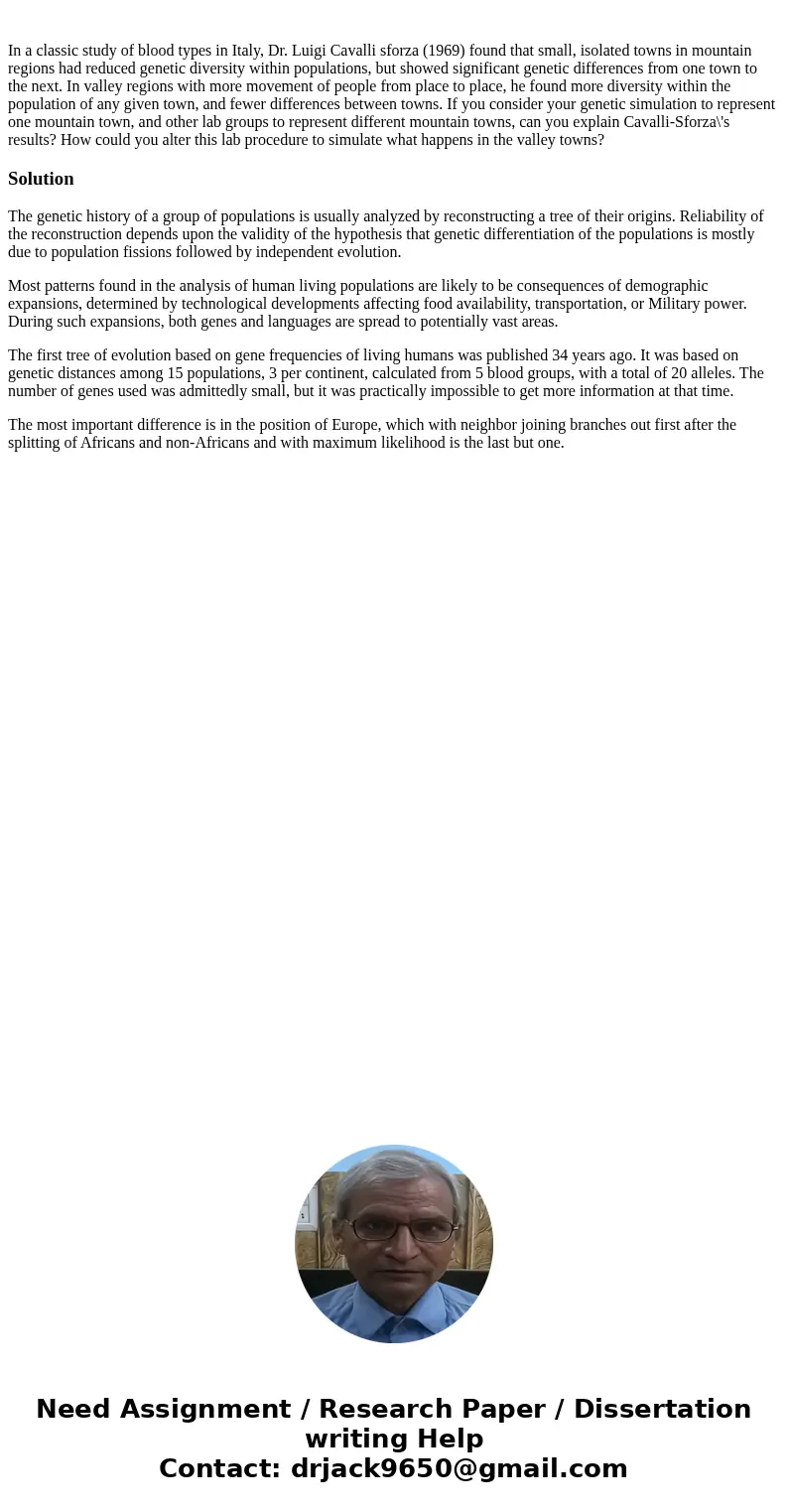In a classic study of blood types in Italy Dr Luigi Cavalli
Solution
The genetic history of a group of populations is usually analyzed by reconstructing a tree of their origins. Reliability of the reconstruction depends upon the validity of the hypothesis that genetic differentiation of the populations is mostly due to population fissions followed by independent evolution.
Most patterns found in the analysis of human living populations are likely to be consequences of demographic expansions, determined by technological developments affecting food availability, transportation, or Military power. During such expansions, both genes and languages are spread to potentially vast areas.
The first tree of evolution based on gene frequencies of living humans was published 34 years ago. It was based on genetic distances among 15 populations, 3 per continent, calculated from 5 blood groups, with a total of 20 alleles. The number of genes used was admittedly small, but it was practically impossible to get more information at that time.
The most important difference is in the position of Europe, which with neighbor joining branches out first after the splitting of Africans and non-Africans and with maximum likelihood is the last but one.

 Homework Sourse
Homework Sourse